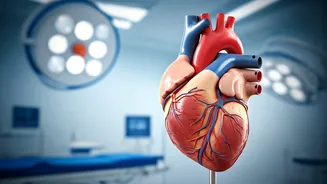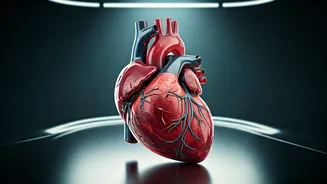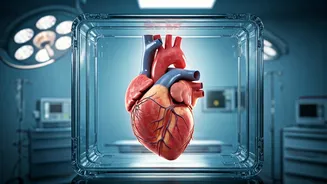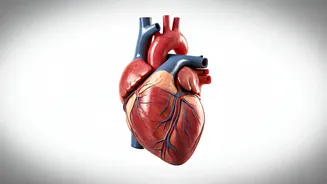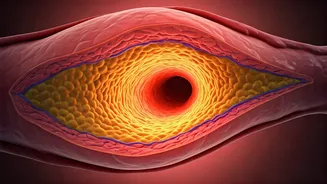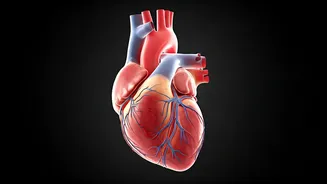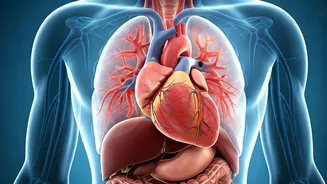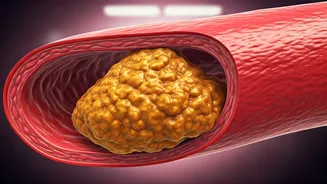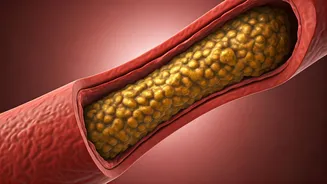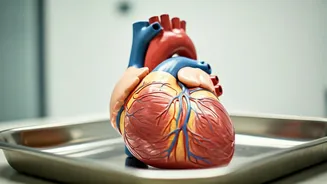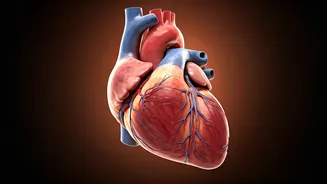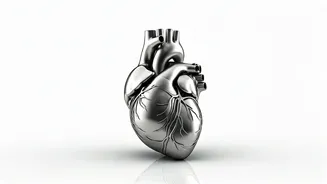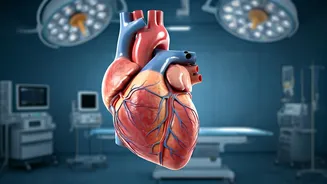Chest Discomfort Explained
One of the most immediate and recognizable signs of blocked arteries is chest discomfort, which manifests in various ways. It can feel like pressure, squeezing,
tightness, or even a burning sensation in the chest. This discomfort may radiate outwards to the arm, neck, jaw, shoulder, or back. These feelings can vary in intensity; sometimes, they're mild, and other times, they're severe enough to cause significant distress. The nature of the discomfort is essential. It is often triggered by physical exertion or emotional stress when the heart demands more oxygen. The pain typically subsides with rest, but any persistent chest pain should not be taken lightly. Immediate medical evaluation is required, especially if you experience sudden or severe chest pain. It is important to remember that chest pain isn't always related to heart problems, but it should be thoroughly investigated to rule out any underlying issues.
Breathing Difficulties Noticed
Shortness of breath, also known as dyspnea, is a common symptom associated with blocked arteries. This difficulty in breathing occurs because the heart struggles to pump enough blood to meet the body's demands, resulting in insufficient oxygen. Breathing problems may happen when performing everyday tasks such as climbing stairs or even walking short distances. It can also occur during rest. The sensation can vary; it might feel like you can't get enough air, or there might be a feeling of tightness in your chest. When combined with chest discomfort, breathing difficulties could signal serious arterial issues. A rapid or shallow breathing pattern is another sign. Seeking medical advice is essential if you consistently experience shortness of breath, particularly alongside other symptoms. Proper diagnosis and treatment are essential to prevent further complications and improve the quality of life.
Fatigue and Weakness
Unusual levels of fatigue and overall weakness can often be symptoms of obstructed arteries, as the heart is unable to supply the body with adequate oxygen. This lack of oxygen results in the body feeling drained, lacking energy, and struggling with normal daily activities. This tiredness is not typical, such as feeling tired after a long day; instead, it is persistent and can be worse when performing physical activities. People might find that even simple tasks become exhausting. They may also notice a decline in their ability to endure physical exertion. This fatigue can be a subtle sign and may be overlooked, but it is important to pay attention to any changes in your energy levels, especially if they are accompanied by other symptoms of arterial blockages. The heart needs to work harder when arteries are blocked to circulate blood effectively, causing the body's energy reserves to deplete faster. This early detection is very important for effectively managing potential heart-related issues.
Swelling in Limbs
Swelling in the legs, ankles, and feet, referred to as edema, can also be a signal of blocked arteries. This swelling occurs because blocked arteries restrict blood flow. The blood may begin to pool, mainly in the lower extremities, causing fluid to build up. This condition is also known as peripheral artery disease (PAD), which often results in swelling. The swelling may be mild or severe, and it may be accompanied by other symptoms such as skin discoloration or pain. If you press on the swollen area, there may be a noticeable indentation that remains for a few moments. Swelling linked to arterial issues is often worse at the end of the day or after prolonged periods of standing or sitting. Managing fluid retention requires prompt medical attention. Early intervention can prevent serious health complications and improve circulation.
Skin Changes Identified
Changes in skin color and temperature, particularly in the legs and feet, can be an indicator of insufficient blood flow due to blocked arteries. One noticeable change is a cool or cold feeling in the affected limbs, compared to other parts of the body. The skin may also appear pale or bluish. The skin's color may turn red or purple when the legs are dangling. Another skin change is the loss of hair growth on the legs and feet, as adequate blood supply is essential for hair growth. In more severe cases, blocked arteries can lead to ulcers or non-healing sores on the feet and legs. These sores can be painful and prone to infection due to the reduced blood flow's ability to heal damaged tissue. Any noticeable changes in skin appearance, temperature, or the presence of non-healing sores should warrant immediate medical examination. These symptoms suggest inadequate circulation and pose significant risks to overall health.
Other Potential Indicators
Besides the more prominent signs, there are other potential indicators of blocked arteries. These may vary, and their presence can depend on the location and severity of the blockage. Dizziness and lightheadedness can sometimes occur because the brain does not receive sufficient oxygen. Digestive issues, such as abdominal pain after eating, may arise due to the limited blood supply to the digestive system. In men, erectile dysfunction can be a sign as blood flow to the pelvic region is compromised. Additionally, leg pain experienced while walking, which disappears with rest, is a clear symptom of intermittent claudication. This pain happens because of inadequate blood supply to the leg muscles during physical activity. Although these signs are not always definitive signs of arterial problems, their presence, especially when combined with other symptoms, warrants medical evaluation. It is important to have an open discussion with a healthcare provider about any unusual physical changes or discomfort you may experience.
